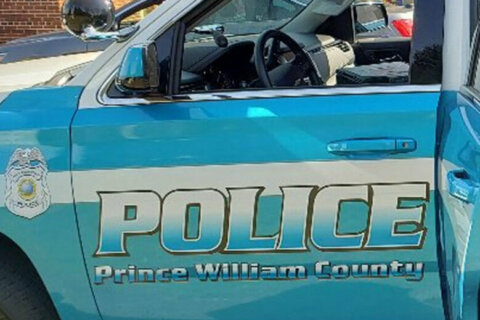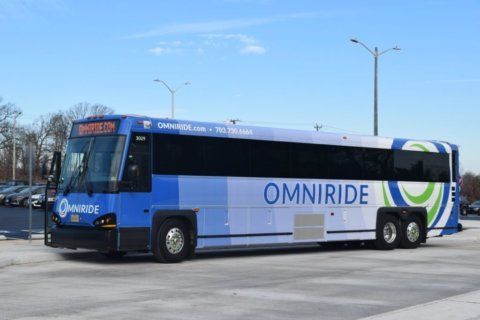This article was republished with permission from WTOP’s news partner InsideNoVa.com. Sign up for InsideNoVa.com’s free email subscription today.
This article was written by WTOP’s news partner InsideNoVa.com and republished with permission. Sign up for InsideNoVa.com’s free email subscription today.
The Prince William County Historical Commission has reiterated its opposition to the proposed PW Digital Gateway and is urging the county to abandon development plans for the area.
The commission held a special meeting Monday to discuss the proposal to designate 2,100 acres along Pageland Lane for data centers.
The meeting was called after the Planning Commission recommended approval of the project last month and the Board of County Supervisors was expected to hold a hearing on Oct. 11. The board hearing has been rescheduled to Nov. 1.
The Historical Commission advises the Board of County Supervisors about the impact of development proposals on cultural resources and produces information about local history.
The area under consideration is the entirety of Pageland Lane between U.S. 29 and Sudley Road and is adjacent to Manassas National Battlefield Park.
The boundaries of the park and the surrounding area were the site of the first and second battles of Bull Run.
The First Battle of Bull Run, fought July 21, 1861, was the first major military engagement of the war. The Confederacy was victorious in the engagement, which saw nearly 1,000 deaths.
Nearly 3,000 soldiers died in the Second Battle of Bull Run, fought from Aug. 28, 1862, to Aug. 30, 1862. It was another Confederate victory and precipitated the South’s failed invasion of Maryland the following month.
The battlefield has emphasized the second battle, but Occoquan Commissioner Jim Burgess said the area is significant to both engagements.
Commissioners provided documents showing that Confederate soldiers occupied field camps on what was called Pageland Farm from July to September 1861. According to the documents, the camps were west of Pageland Lane in many areas included in the proposal.
Burgess said soldiers in those camps suffered from outbreaks of measles, with hundreds of soldiers dying from the disease. Many of those who died were buried in the camps, he said.
Burgess said the area also saw fighting ahead of the second battle. He said on Aug. 28, 1862, soldiers from Pennsylvania were traveling along what is now U.S. 29 and came under fire from Confederate artillery stationed at Brawner Farm.
The Union soldiers fired back with artillery from a rise near Pageland, Burgess said.
Burgess said Confederate Gen. Robert E. Lee also came under sniper fire in the area during the second battle.
County staff’s draft plan for regulating the proposal, which would allow three pockets of development along the southern portion of Pageland Lane, included large swaths of protected open space in the area, but the commission said the whole stretch should be protected.
“Those positions … are of tactical significance to anyone studying that battle and they should not be destroyed,” said Coles Commissioner John De Pue.
Opponents of the proposal have said it would pave over areas that are in the battlefield’s legislative boundary, which was drawn by Congress and extend beyond the park’s existing borders.
The area the commission discussed Monday went beyond the legislative boundaries.
“Simply because part of the battlefield isn’t within the legislative boundaries doesn’t mean that a battle didn’t happen there,” De Pue said.
Occoquan Mayor Earnie Porta, who is an at-large representative, made a motion to endorse the county staff plan for regulating the project while opposing development south of Little Bull Run and between Sudley Road and an unnamed tributary of Lick Branch.
The latter recommendation was tied to potential significance in the life of Jennie Dean, who in 1893 founded what would become the Manassas Industrial School, a post-high school training facility for minority youth across Northern Virginia.
Porta’s motion failed 3-8 because commissioners did not want to give the impression that they supported development in the area.
“It’s a horrible plan promoted by developers and people who are going to get filthy rich by it,” Burgess said. “We should not be supporting this kind of development. It’s a rape of Prince William County. … We can try to mitigate this thing to death, but it’s still going to be an atrocious atrocity.”
Commissioners seemed interested in making a flat-out recommendation of denial, but Potomac Commissioner Yolanda Green said they should offer some suggestions.
“If we don’t put something in writing today, then that means we support what they’re going to do,” she said. “To sit here and say we don’t like it, we don’t support it and just don’t give any type of suggestion at all I don’t think is the adult way to move forward.”
The commission voted in May to recommend denial of the project, but at the time offered a slew of suggestions to mitigate its impact including limiting development in certain areas and conducting an archeological study.
The commission eventually voted to reaffirm the May resolution and oppose development south of Little Bull Run and between Sudley Road and an unnamed tributary of Lick Branch without endorsing the project or county staff plan for regulations.
The project is scheduled for a public hearing before the Board of County Supervisors at 7 p.m. Nov. 1 at 1 County Complex Court, Woodbridge.







